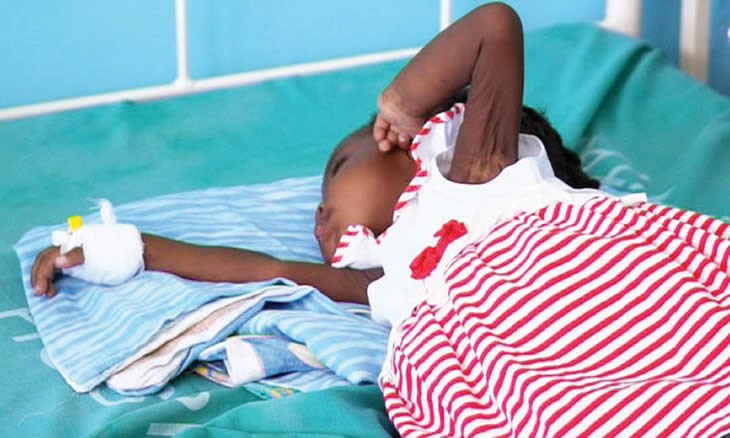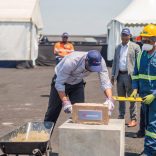Mozambique: Aid desperately needed, armed groups must cease attacks on civilians - Refugees ...
Maputo Central Hospital registers ten new cases of childhood cancer per month

O País
More and more children are suffering from cancer. Nine to ten new cases of paediatric cancer are recorded at Maputo Central Hospital every month, with leukaemia, tumours of the central nervous system, lymphomas and neuroblastomas are the most frequent tumours in childhood.
According to the latest data from Maputo Central Hospital, 17 children are currently hospitalised, filling the paediatric oncology unit to capacity.
Paediatrician Faizana Amodo says that one of the challenges has to do with the responsiveness of the unit, the only one treating the disease. This means many patients are forced to leave their areas of origin in search of treatment.
“For the most part, patients arrive at health facilities late [in the progress of their disease], which makes our response difficult, and they easily give up treatment,” Faziana says.
Despite therapeutic advances in the past five years, which have ushered in a survival rate of 50 percent, deaths due to the onset of tumours are around 30 percent (global data). Being a disease without cure, follow-up of treatment is critical to patients’ quality of life.
Early warning signs of childhood cancer include white spots on the eyes, sudden strabismus, blindness, prolonged unexplained fever, sudden weight loss, pallor, fatigue, easy bleeding, painful bones, unexplained pain in the joints and back, easy fractures, change or deterioration in the balance, gait or speech and swelling in the region of the head.
“If a child feels prostrated, has no strength, has mobility problems, or if a mass or a bump in the body appears, parents should be aware of the situation and take the child to a specialist doctor who will ask the child to undergo clinical tests ,” Amodo said. If the diagnosis is confirmed, treatment may include chemotherapy to destroy, control or inhibit the growth of malignant cells.
The success of the treatment depends mainly on the child’s ability to overcome traumatic events, the quality of treatment and of the care provided, and constant scientific evolution. “Despite the deep drama and pain associated with this disease, we must fight it with more confidence and always maintain hope,” she says.
According to the World Health Organisation, world incidence of childhood cancer has grown by 13 percent in the last two decades, as a result of a combination of better diagnosis and also environmental factors.
The international study coordinated by the International Agency for Research on Cancer, the WHO agency specialising in cancer, indicates that the incidence of cases of the disease among children under 14 years of age was 140 cases in 1 million per year between 2001 and 2010.
Leukaemia is the most frequent type of cancer in this age group and accounts for almost a third of the cases, according to the study, which analysed 300,000 cases diagnosed in 62 countries.
Staff numbers for the treatment of childhood cancer still leave much to be desired. For example, Mozambique has only one paediatric oncologist, which makes it difficult to respond to the disease. Currently there are two paediatric doctors in training, plus more nursing staff dedicated to the area.
“Unfortunately the numbers of professionals we currently have are not sufficient to respond to the cases we receive daily,” Faizana says.
Angelina Dias, a physician attached to the paediatric department of Maputo Central Hospital, notes that cancer patients often have social problems, doubling the effort on the part of the medical team.
“We treat all the symptoms that accompany the evolution of the disease and its treatment, so it’s a difficult task. We try to make the most of what we have,” she said.
By Julião Job












Leave a Reply
Be the First to Comment!
You must be logged in to post a comment.
You must be logged in to post a comment.